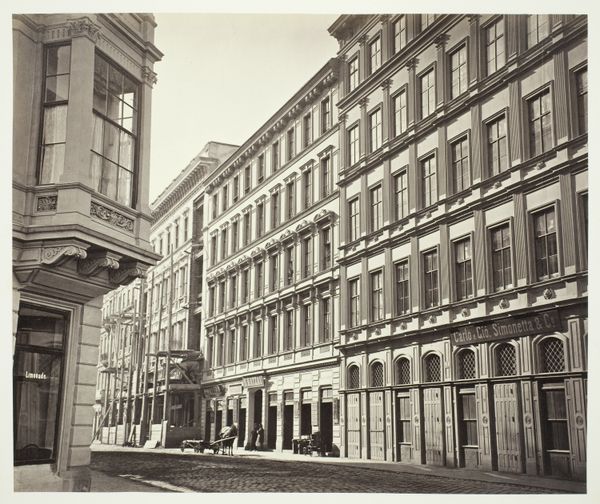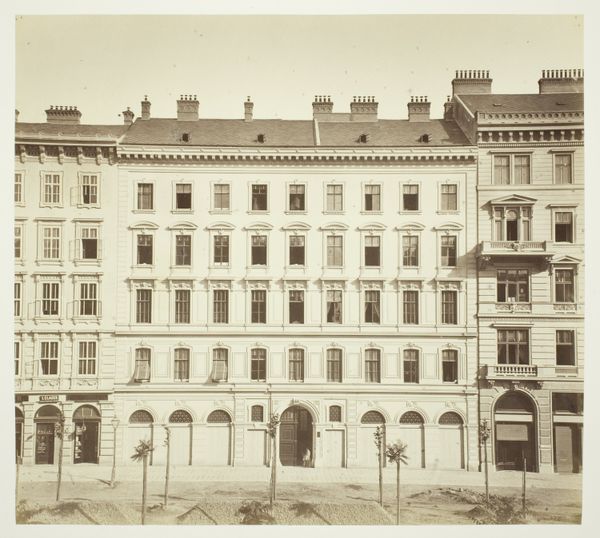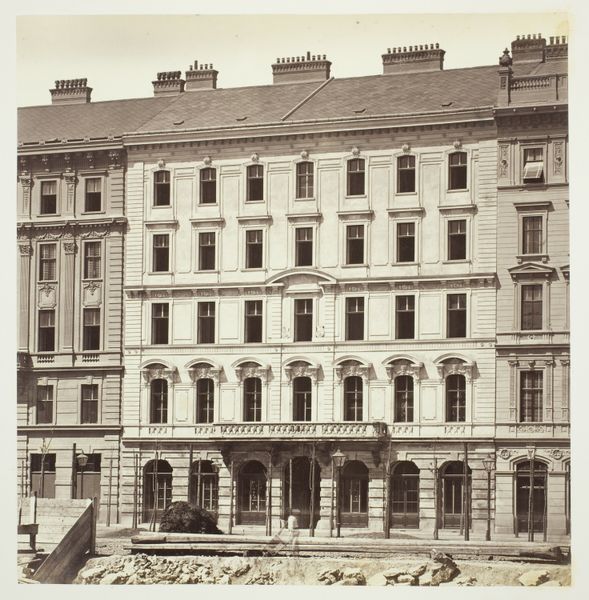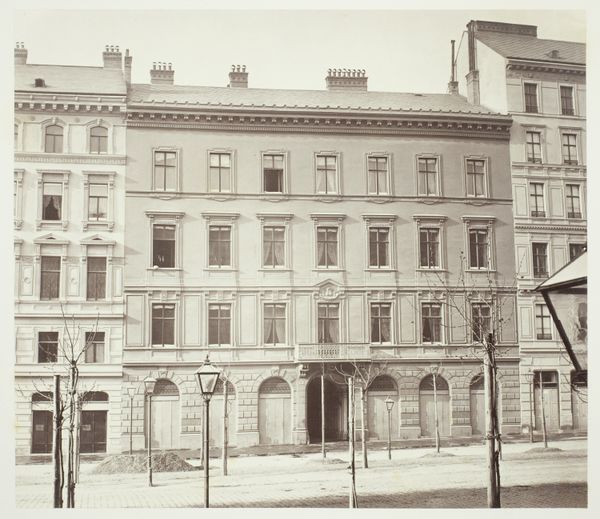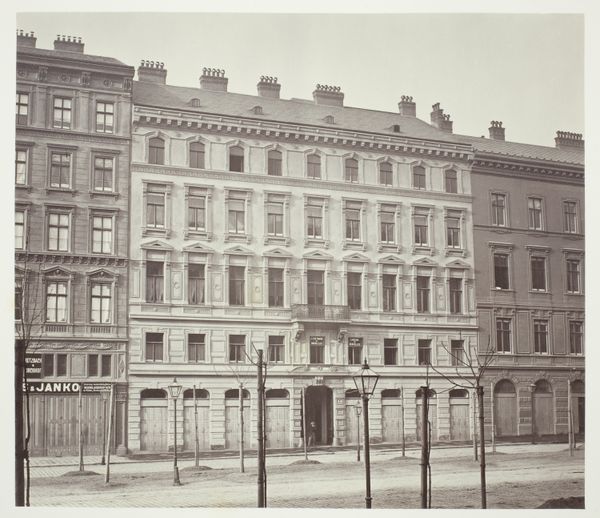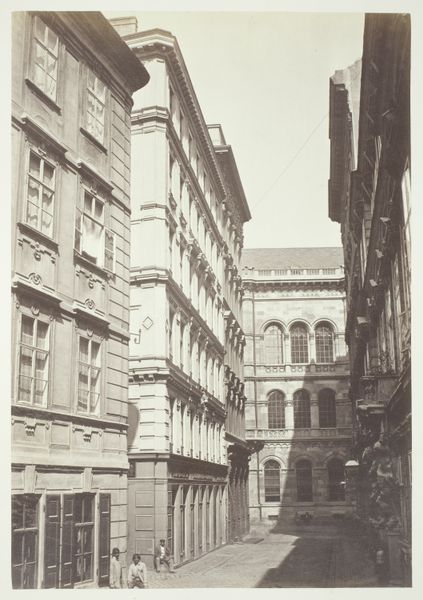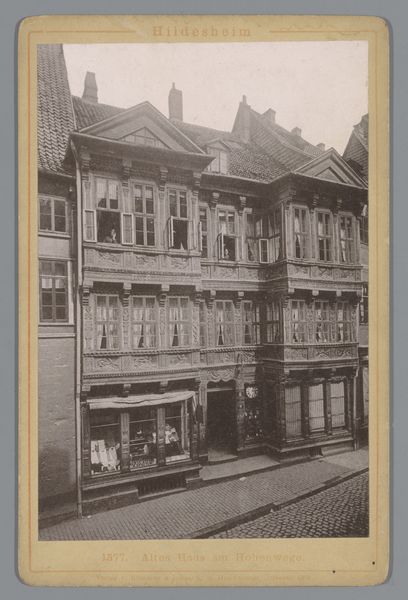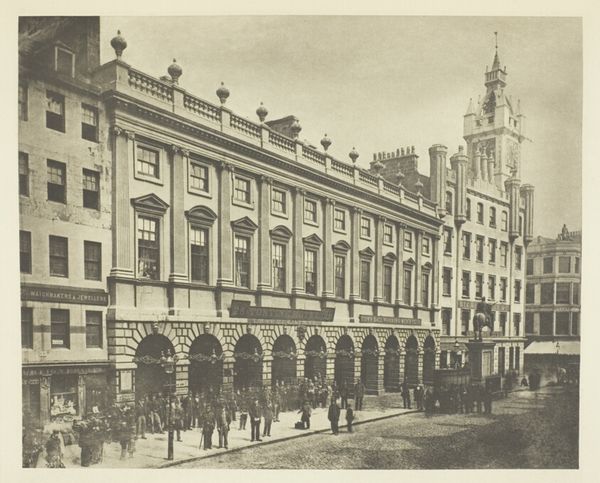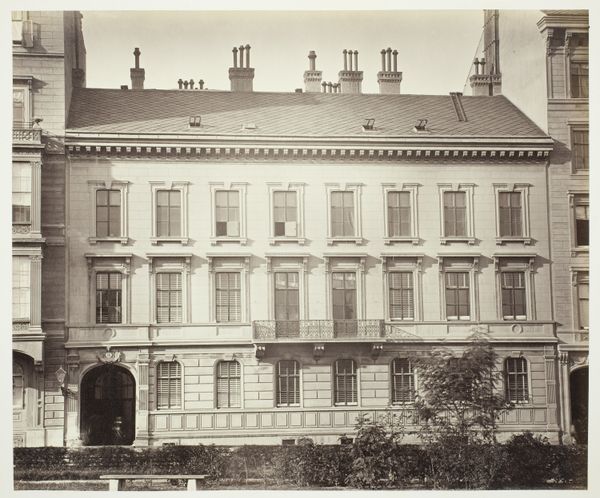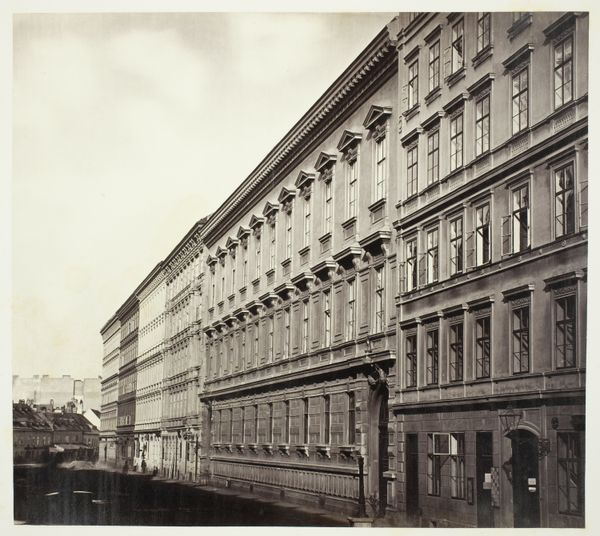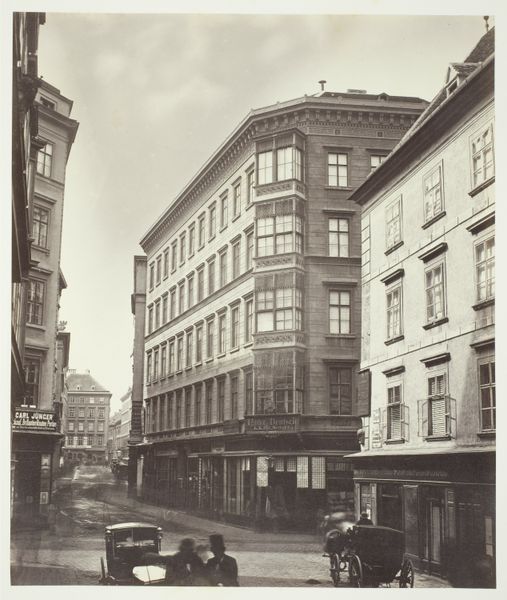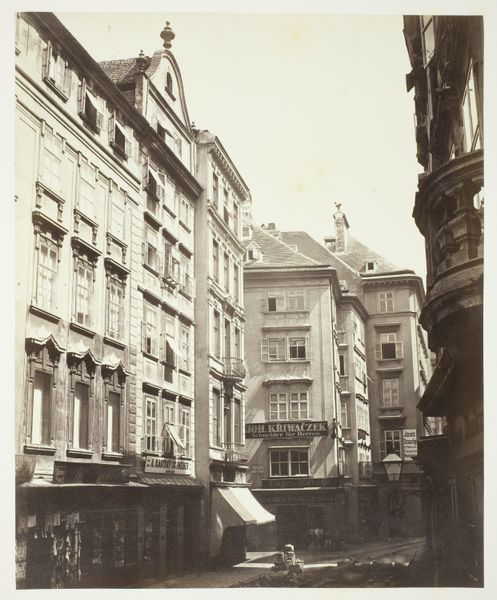
silver, print, daguerreotype, photography, architecture
#
16_19th-century
#
silver
# print
#
daguerreotype
#
photography
#
historical photography
#
19th century
#
cityscape
#
architecture
#
realism
Dimensions: 28.6 × 26.1 cm (image/paper); 61.2 × 42.7 cm (album paper)
Copyright: Public Domain
Editor: So, this daguerreotype print is titled "Freyung No. 1, Wohnhaus des Grafen M. Hardegg," dating back to the 1860s. Looking at this silver image, it feels like stepping into a hushed, bygone era. The building is impressive, but there's an almost melancholic stillness to it. What do you see in this piece? Curator: You know, that stillness you perceive resonates with me too. I almost feel a longing for a time I never knew. These early photographs, especially daguerreotypes, are like holding a piece of captured time, a silvered memory. Think about the process involved – the painstaking preparation, the long exposure… it demanded a certain… reverence, I think. This image isn't just a record of a building; it's a meditation on permanence and impermanence, don’t you think? Do you notice how the sharpness of the architecture contrasts with the blurred figures at street level? Editor: I do! It’s like the building is frozen while life swirls around it. So, the blurriness wasn’t a technical flaw? Curator: Oh, no, I think it adds to the poetry! It's a clever trick that subtly acknowledges the flow of daily life, and maybe, suggests even a quiet defiance of it, or longing for it, embedded in this solid structure. But beyond the technique, consider also what the photographer chose to capture, and *how*! How much do you feel it says about class or commerce, just judging by the content of the image? Editor: I never really thought about the blurred figures *adding* something. I suppose it does give a sense of place, despite its ethereal feel, highlighting the building’s importance. Seeing the Kaffehaus, with even a flower seller on the ground, almost feels inviting. This piece might have a sense of permanence, but the street activity introduces a bustling feeling, making you believe life can, indeed, happen *there*. Curator: Absolutely. It's that delicate balance, that tension, between the ephemeral and the enduring that makes this image so evocative. The photographer invites us to observe not just the "what" but also the "how" and the "why." That interplay keeps me hooked. Editor: I see it now. The melancholy and stillness I initially perceived have transformed into a quiet anticipation. This has definitely broadened how I look at architectural photography.
Comments
No comments
Be the first to comment and join the conversation on the ultimate creative platform.
